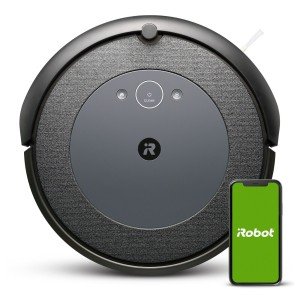Understanding Floor Robots: The Future of Home Cleaning
In recent years, technological advancements have actually significantly changed the landscape of home cleaning. Among smart vacuum cleaner is the floor robot, a gadget that has quickly gained appeal for its convenience and performance. This article aims to check out the numerous aspects of floor robots, their performance, advantages, popular designs, and some frequently asked questions to assist consumers make informed decisions.
What is a Floor Robot?
A floor robot, typically described as a robotic vacuum, is an automated device developed to browse floors and eliminate dirt, dust, and debris. Unlike traditional vacuum cleaners, floor robots operate autonomously, using a hassle-free cleaning experience. These smart makers utilize sensing units, mapping technologies, and advanced algorithms to clean numerous surface areas, consisting of wood, tile, and carpet.
How Do Floor Robots Work?
Floor robots operate through a combination of software and hardware components. Here are the essential functions that enable their functionality:
1. Sensing units
- Challenge Detection: Floor robots have built-in sensors that assist them identify challenges, allowing them to navigate around furnishings and prevent falls.
- Cliff Sensors: These prevent the robot from falling down stairs or ledges by recognizing modifications in elevation.
2. Navigation and Mapping
- Visual Mapping: Some sophisticated designs use cameras and laser technology to create in-depth maps of the cleaning location.
- Simultaneous Localization and Mapping (SLAM): This technique assists the robot track its area and efficiently plan its cleaning route.
3. Cleaning Mechanisms
- Suction Power: Most robotic vacuums use a suction system to capture dirt and dust, which is then stored in an onboard dustbin.
- Brushing Systems: Many designs come equipped with rotating brushes or mops for boosted cleaning capabilities, especially on carpets or tough surfaces.
4. Smart Features
- Connection: Many floor robots support Wi-Fi connection, permitting users to manage them through mobile phone apps or smart home systems.
- Scheduling: Users can set up cleaning times, guaranteeing their homes are tidy even when they're not there.
5. Self-governing Charging
- Self-Docking: Most robots immediately return to their charging station once their battery runs low, ensuring they're constantly all set to clean.
Benefits of Using a Floor Robot
The adoption of floor robots comes with numerous benefits that make them appealing to users:
1. Convenience
Floor robots can clean up while users take care of other jobs, allowing for multitasking and time-saving.
2. Increased Efficiency
Robotic vacuums typically cover more ground in less time compared to standard approaches, thanks to their methodical cleaning patterns.
3. Constant Cleaning Routine
Users can schedule routine cleanings, making sure that their homes stay tidy without requiring everyday intervention.
4. Ease of access
Robotic vacuums can easily access hard-to-reach locations, such as under furnishings or in tight areas.
5. Advanced Features
Lots of models come geared up with functions like voice control and app integration, improving usability and accessibility.
Popular Floor Robots
When thinking about a floor robot, different brands and designs accommodate various needs and budgets. Here's a short summary of some leading options:
| Brand | Model | Secret Features | Price Range |
|---|---|---|---|
| iRobot | Roomba i7+ | Smart mapping, self-emptying dock | ₤ 600 - ₤ 800 |
| Roborock | Roborock S7 | Sonic mopping, barrier avoidance | ₤ 500 - ₤ 700 |
| Neato | Neato D7 | D-shape design, advanced suction | ₤ 600 - ₤ 800 |
| Ecovacs | Ecovacs Deebot T8 | Mopping function, advanced mapping | ₤ 600 - ₤ 800 |
| Shark | Shark IQ Robot | Self-emptying base, home mapping | ₤ 400 - ₤ 600 |
(Note: Prices might differ based upon merchants and ongoing promotions.)
Frequently Asked Questions (FAQs)
1. Are floor robots reliable on carpets?
Yes, many modern floor robots are designed to clean numerous surface areas, consisting of carpets. Models with strong suction and rotating brushes are especially reliable at getting pet hair and ground-in dirt.
2. How typically should I run my floor robot?
This depends on your household's needs. For smart vacuum with family pets or high foot traffic, day-to-day or every other day cleaning might be useful. For quieter households, running the robot once a week might be sufficient.
3. Can I control my floor robot from another location?
Many floor robots feature mobile phone apps that enable users to control their devices from another location, schedule cleanings, and display performance.
4. Do I need to clear the dustbin frequently?
Most robots need regular emptying of the dustbin, particularly in homes with family pets or heavy soil. Nevertheless, some models offer self-emptying abilities, which reduce user participation.
5. Are floor robots ideal for all kinds of flooring?
The majority of floor robots work on various surfaces, including hardwood, tile, and low-pile carpets. Nevertheless, some may perform better on specific surfaces, so it's important to choose a design fit to your home's needs.
As families continue to accept innovation, floor robots have actually become essential cleaning buddies, offering convenience, performance, and advanced functions. Understanding their performances, benefits, and offered models allows customers to pick the best floor robot to satisfy their specific cleaning needs. By buying this ingenious technology, property owners can guarantee their home remain clean and comfortable with very little effort.

